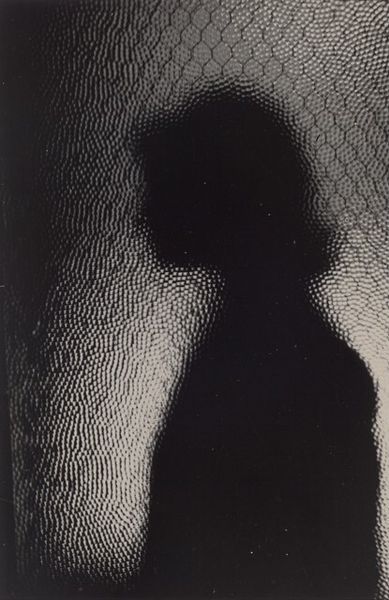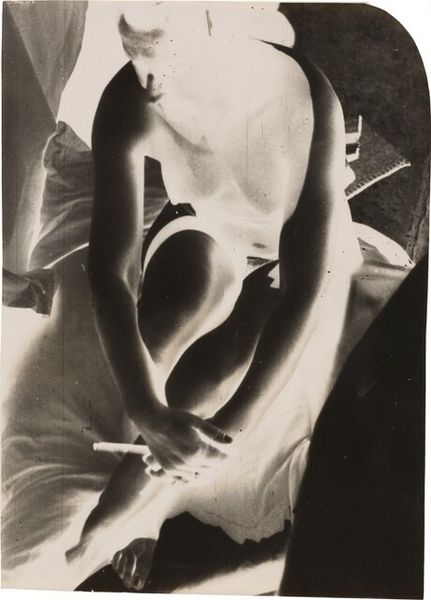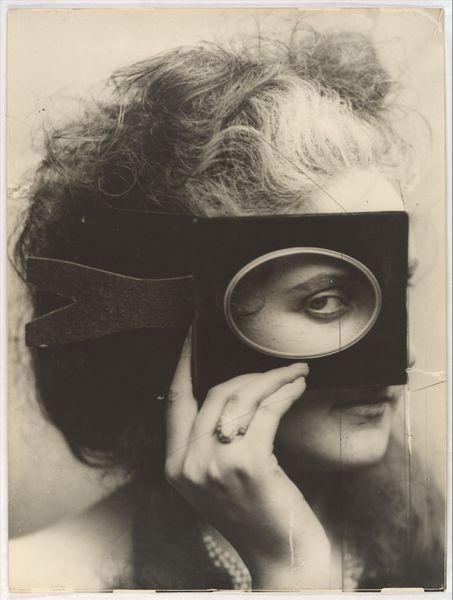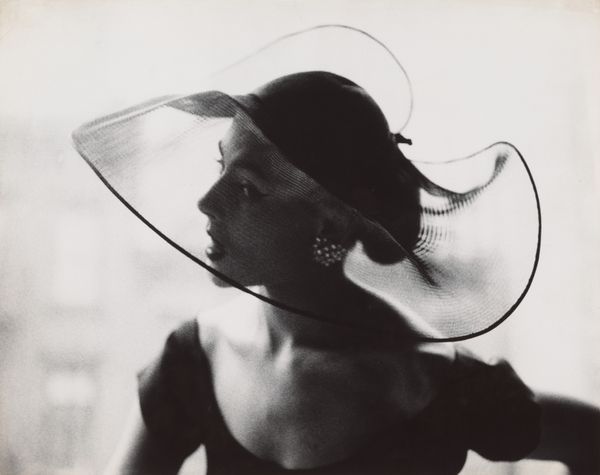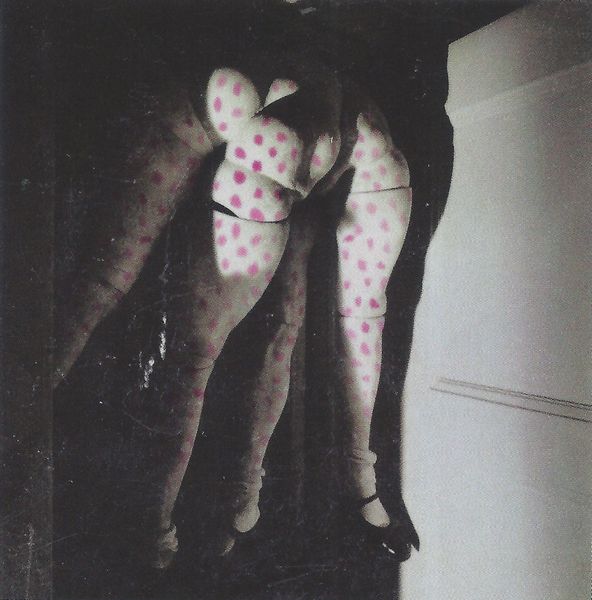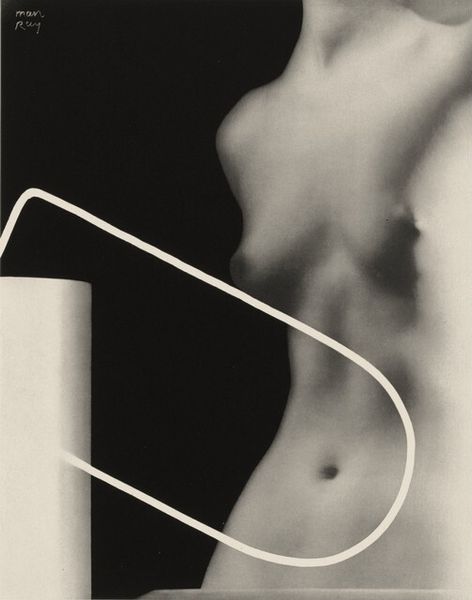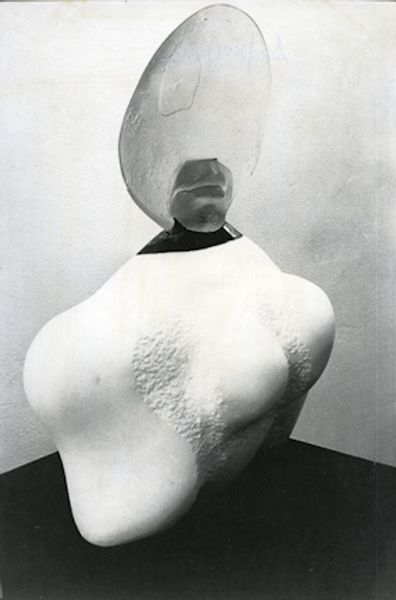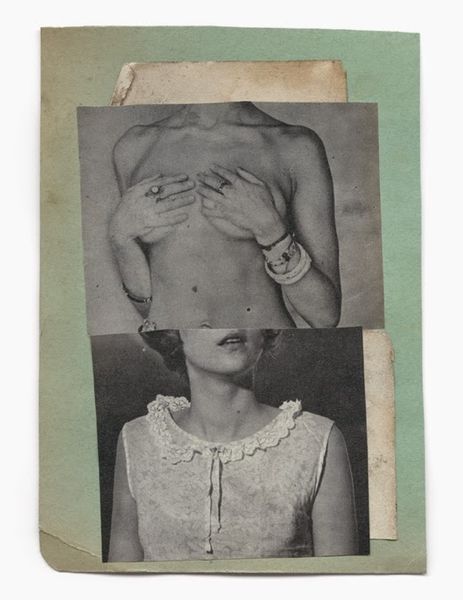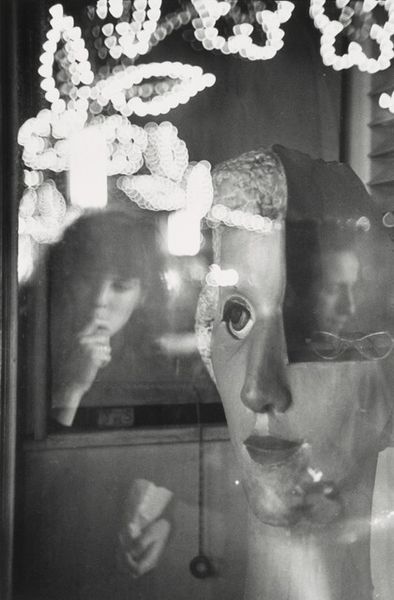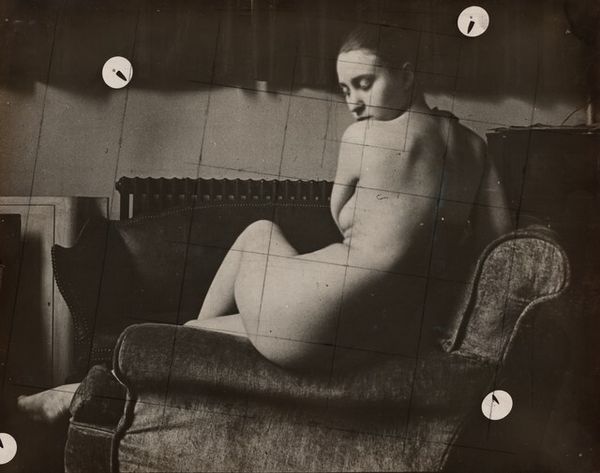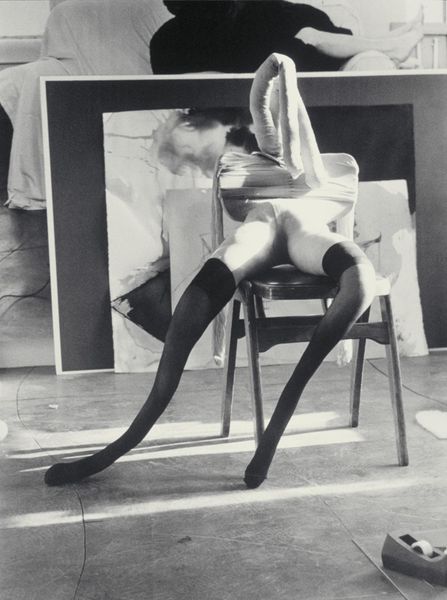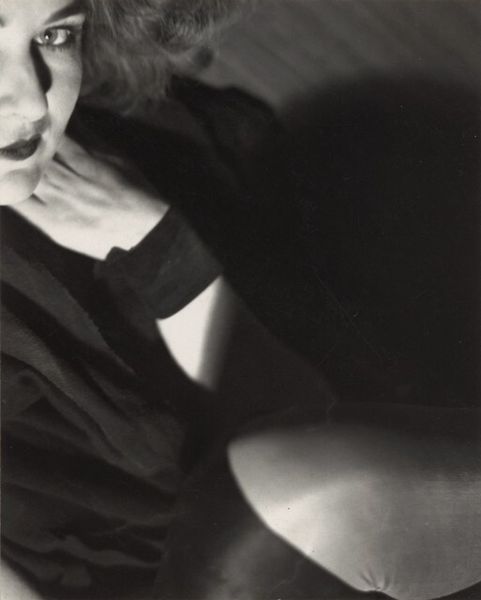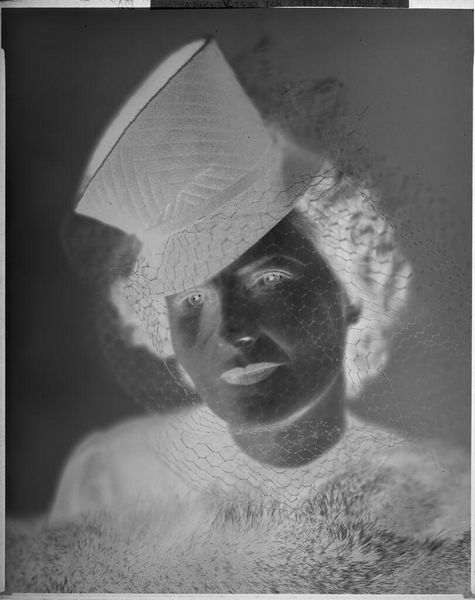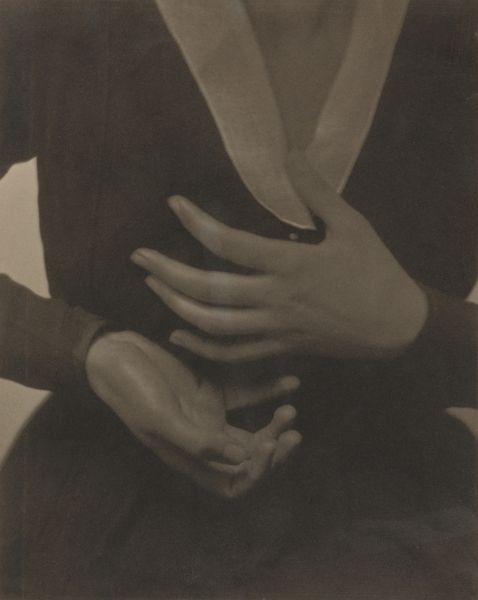
photography, photomontage, sculpture
#
portrait
#
art-deco
#
sculpture
#
photography
#
black and white theme
#
photomontage
#
sculpture
#
black and white
Dimensions: image: 23.1 x 16.7 cm (9 1/8 x 6 9/16 in.) sheet: 23.9 x 18.2 cm (9 7/16 x 7 3/16 in.)
Copyright: National Gallery of Art: CC0 1.0
Curator: Well, this image gives me the chills. The mannequins are eerie, almost ghostly, especially with those masks. Editor: Agreed. The atmosphere is unsettling. It is a photograph by Renata Bracksieck entitled "Mannequins," created sometime between the 1920s and 30s, a captivating photomontage with clear influences of both Art Deco and Surrealism, reflecting the unease and transformation in society at the time. Curator: I immediately think of women during the interwar period and the artifice and performance expected of them. How did the role of women change after the first world war, only to be subtly undermined by the dominant structures? And the mask-- it becomes a symbol of these imposed expectations of what it meant to be feminine. The gaze shifts from female liberation to manufactured consumer identities through marketing and representation. Editor: Exactly, and that’s amplified by the materials – the juxtaposition of the mannequin and the mask, forms manufactured for display. Think of the history of dressmaking; now look at these disembodied forms. How do these commodities reinforce particular body types as social ideals while invisibilizing their means of creation? The choice of the fishnet over these torsos adds another layer: class, desire, and a sort of dark allure come to mind. Curator: I completely agree, particularly on the layering. By the way the photo presents these images, it calls to mind Laura Mulvey's Male Gaze theory from the 70s: are the artist and/or viewers implicated as voyeurs? Who is peering into this photograph? Editor: Definitely a pertinent point. I keep thinking about Walter Benjamin’s work on art and mechanical reproduction, especially photography, and its inherent deconstruction of aura. Look how that manifests here—what is emphasized or, rather, erased through mechanical intervention? I imagine the labor, too—developing, printing. It emphasizes the creation of illusions, and it’s so effectively conveyed here. Curator: The image definitely holds the mirror up to contemporary viewers who participate in late stage capitalism; what consumption does this photographic layering evoke? Editor: The tension is fascinating; something almost gothic, something sinister perhaps, despite these highly manufactured materials—a stark commentary on objectification that implicates viewer, producer, and subject alike. Well, I find my mind buzzing with more questions now than answers. Curator: Mine as well. The artist has created something really lasting. A piece that remains disturbingly pertinent.
Comments
No comments
Be the first to comment and join the conversation on the ultimate creative platform.
